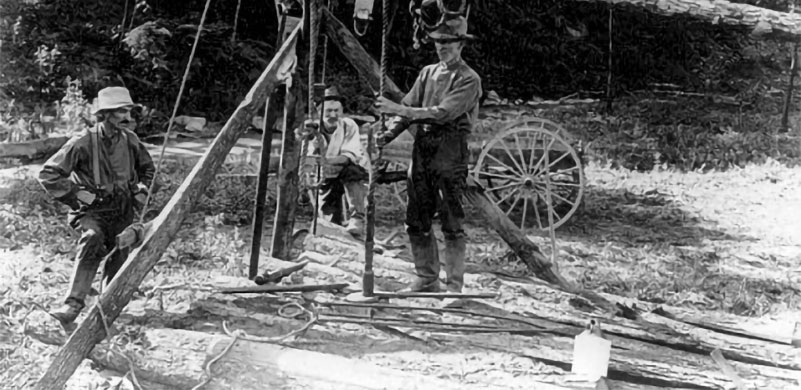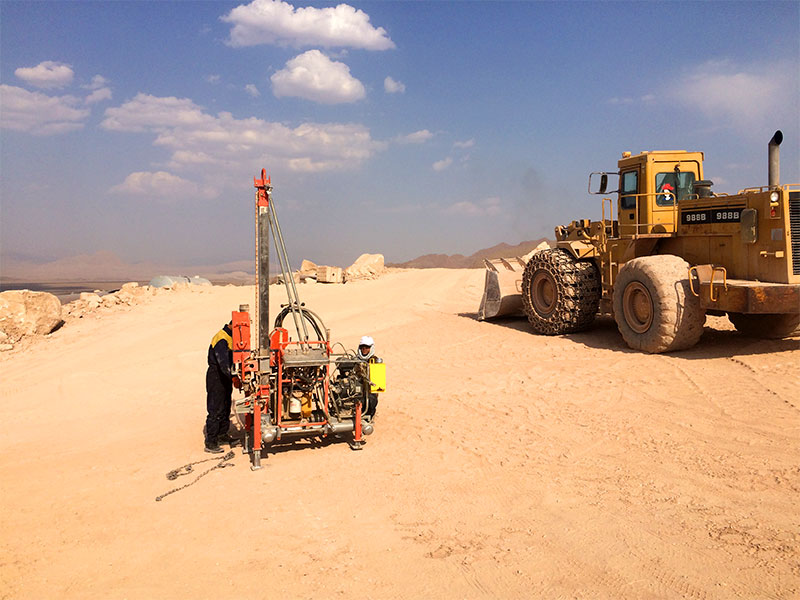
History of Drilling
Since ancient times, civilizations have conducted drilling operations to access water and certain crystals. Today, we can still see the remnants of tunnels and deep aqueducts dug by the Iranians and Chinese. Until a few decades ago, hand-held drilling was commonplace for creating holes for tunnel construction, road construction, and mining.
The equipment used in this method included a long rod as a drill and a heavy metal piece as a hammer for tapping or drilling. Human power was the sole source of energy for the drilling process. The drillers would hold the rod perpendicular to the rock and strike the end of the rod with a hammer weighing 1.8 kg. After each strike, they would rotate the rod a few degrees. With this method The maximum drilling speed for a diameter of 32 mm was three-tenths of a meter per hour. It was possible to dig up to a depth of six-tenths of a meter, and as the number of people increased and gradual advancements were made, the digging depth reached up to 1.8 meters.
The final evolution of hand drilling in rocks involved the use of cables to lift heavier weights and longer drills. This allowed for the drilling of holes with a diameter of 50 mm and a depth of seven meters in three hours, in the case of softer rocks.
The advent of machines in the drilling process began in 1820, and the introduction of steam engines led to the development of the rotary drilling method and the cable drilling system. By 1850, the drilling tool was equipped with diamonds, and percussive drilling methods using compressed air were introduced. Percussive-rotary drilling systems were developed in America in 1890, and tungsten-carbide drills were first used between 1920 and 1940 in Germany.
In 1970, hydraulic drilling machines were invented. Efforts to access oil and gas in Oklahoma, USA, and Siberia, Soviet Union, using these machines and drilling wells with a depth of more than ten thousand meters, proved successful.









